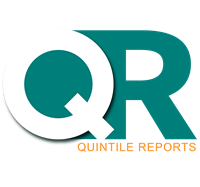
Endoscopic Retrograde Cholangiopancreatography Market Size, Share And Growth Report 2034
The Endoscopic Retrograde Cholangiopancreatography market under analysis is characterized by dynamic growth and evolving trends that are reshaping the competitive landscape. With 2023 serving as the base year for this Endoscopic Retrograde Cholangiopancreatography market study, recent data highlights a significant expansion driven by technological advancements, rising consumer demand, and a growing focus on innovation. Companies are refining their go-to-market (GTM) strategies to effectively capture these emerging opportunities and respond to the rapidly changing market dynamics.
Key trends influencing the Endoscopic Retrograde Cholangiopancreatography market include the rapid adoption of digital technologies, the integration of sustainable practices, and the increasing importance of customer experience. These trends are not only driving growth but also creating new challenges for industry participants, who must adapt their GTM strategies to navigate regulatory changes, supply chain disruptions, and fluctuating economic conditions. Despite these challenges, the Endoscopic Retrograde Cholangiopancreatography market is poised for sustained growth, with emerging markets playing a critical role in the expansion of the industry.
Looking ahead, the Endoscopic Retrograde Cholangiopancreatography market is forecasted to continue its upward momentum through 2034, supported by ongoing investments in research and development, strategic partnerships, and mergers and acquisitions. Companies that can effectively tailor their GTM strategies to the evolving market landscape, innovate, and meet shifting consumer demands are likely to achieve sustained success. Endoscopic Retrograde Cholangiopancreatography market report provides a comprehensive analysis of the current market environment and offers valuable insights into the key drivers, challenges, and opportunities that will shape the industry's future over the next decade report offers a comprehensive analysis of market dynamics across various segments, regions, and countries, incorporating both qualitative and quantitative data. It covers the period from 2017 to 2034, providing a detailed examination of historical performance, current market conditions, and future projections.
Historical Analysis (2017-2023): The report presents a thorough review of market trends, performance metrics, and growth trajectories for the years 2017 through 2023. This historical perspective is crucial for understanding past market behavior and identifying patterns that influence current and future market dynamics.
Forecast and Projections (2025-2034): Building on historical data, the report provides forward-looking insights, including market forecasts and growth projections from 2023 to 2034. It details anticipated market trends, emerging opportunities, and potential challenges across different segments, regions, and countries.
Compound Annual Growth Rate (CAGR): The report includes a precise calculation of the compound annual growth rate (CAGR) for the forecast period of 2025 to 2034. This metric will be instrumental in assessing the expected growth trajectory and the overall market potential during the forecast period.
Endoscopic Retrograde Cholangiopancreatography (ERCP) Market is witnessing steady growth due to the rising incidence of gastrointestinal disorders, gallstones, pancreatic diseases, and bile duct-related complications. ERCP is a minimally invasive diagnostic and therapeutic procedure that combines endoscopy and fluoroscopy to examine the pancreatic and bile ducts. It is particularly valuable in identifying and treating conditions such as bile duct stones, strictures, tumors, and chronic pancreatitis.
The growing preference for minimally invasive procedures is a major factor contributing to the adoption of ERCP. This technique reduces patient discomfort, lowers infection risk, shortens hospital stays, and ensures quicker recovery times. Furthermore, technological advancements in endoscopic imaging, fluoroscopic guidance, and the development of innovative ERCP devicessuch as cannulas, sphincterotomes, guidewires, and biliary stentsare enhancing the success rates and safety of the procedure. The integration of advanced systems such as Mobile Endoscopic Workstations is playing a critical role in improving the efficiency and portability of ERCP setups. These systems support real-time data capture, streamlined imaging workflows, and enhanced ergonomics for clinicians, further propelling their demand in modern gastroenterology units.
Insights:
The increasing prevalence of liver and pancreatic diseases globally, coupled with the aging population, is elevating the demand for ERCP procedures. The procedure is often recommended in complex cases where non-invasive imaging methods like MRCP (Magnetic Resonance Cholangiopancreatography) are insufficient. Also, the introduction of single-use duodenoscopes is mitigating the risks associated with cross-contamination, further promoting the adoption of ERCP in clinical settings. Additionally, ongoing training and education for endoscopists are contributing to the wider adoption and successful execution of the procedure.
Regional and Country-Level Analysis:
North America holds a dominant share of the ERCP market, supported by a high prevalence of gastrointestinal disorders, advanced healthcare infrastructure, and access to skilled professionals. The United States in particular benefits from strong procedural reimbursement and widespread awareness. Europe follows, with countries like Germany, the UK, and France investing in minimally invasive endoscopic procedures. The Asia-Pacific region is emerging as a high-growth market due to the rising healthcare expenditure, increasing adoption of endoscopic technologies, and growing patient awareness in countries such as China, Japan, India, and South Korea. Latin America and the Middle East & Africa are gradually advancing, with growing investment in healthcare technology and hospital infrastructure.
Strategic Initiatives:
- Key medical device manufacturers are investing in R&D to create advanced ERCP tools with higher precision and safety, including disposable duodenoscopes and integrated imaging devices. Hospitals and specialty clinics are expanding their gastroenterology departments to accommodate growing demand for ERCP procedures. Training programs for endoscopists are being enhanced through simulation-based education and virtual reality tools to improve procedural efficiency and outcomes. Collaborations between endoscope manufacturers and healthcare institutions are fostering the development of customized ERCP solutions tailored to specific clinical needs. Companies are targeting emerging economies by introducing cost-effective ERCP tools and providing on-ground support and education to healthcare professionals.

Legal Disclaimer:
MENAFN provides the
information “as is” without warranty of any kind. We do not accept
any responsibility or liability for the accuracy, content, images,
videos, licenses, completeness, legality, or reliability of the information
contained in this article. If you have any complaints or copyright
issues related to this article, kindly contact the provider above.

















Comments
No comment